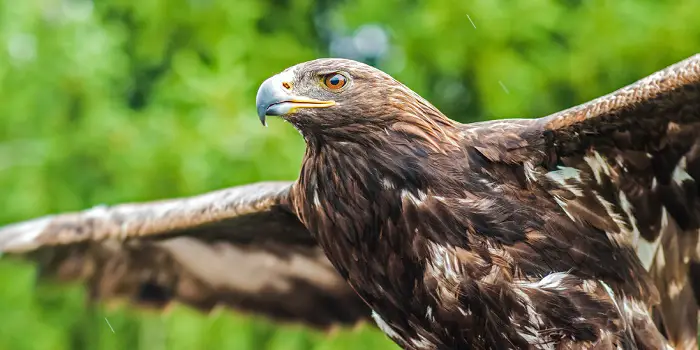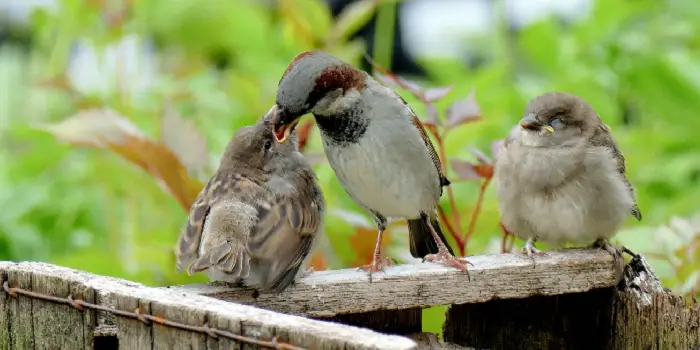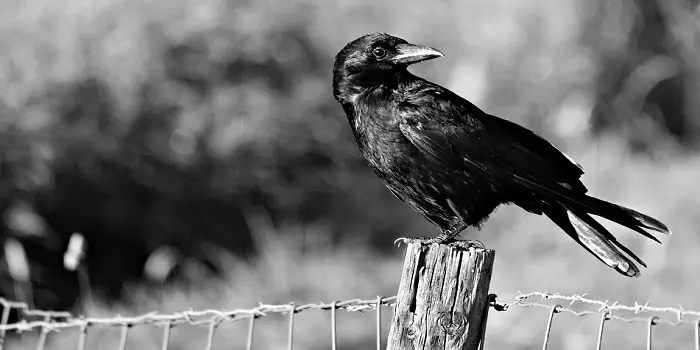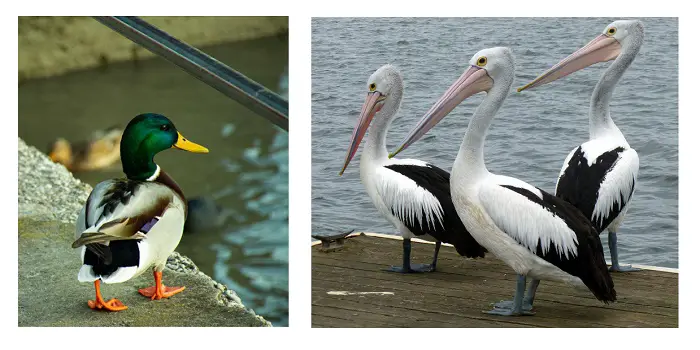
Hawks are beautiful birds that are often seen perched on tree branches, on power lines, or even on fence posts searching for food.
And while mice are among the most common treats for hawks, they will feed on any small animal or bird that is on the ground.
This includes chickens, snakes, and even small dogs or cats, typically those under 20 pounds.
While hawks help control the mice and snake population, they pose a danger to your lovely pets.
Especially those Red-tailed, Red-shouldered, and Cooper’s hawks are considered to be quite dangerous for your birds, pets, and small mammals.
Since these hawk species have very keen eyesight, they can quickly scan for their prey from elevated perches like rooftops and chimneys.
What Attracts Hawks to Your Yard?
The birds such as sparrows, doves, pigeons, thrushes, and finches attract the hawks most to your yard.
In addition to these birds, rodents and insects in your yard may be a food source for the hawks.
Remember, killing (or even injuring) a hawk can lead to fines as they are protected in the US by Federal law because of their important role in controlling other tiny pests like rats, squirrels, voles, etc.
Many times, if it is allowed, you will need to take a special permit for killing them which will be very difficult to obtain.
If you plan to shoot these birds of prey, you should check the laws in your specific area or state before performing such an act.
So, how you can protect your small animals and pets, and what are the methods you can try to keep hawks away from them?
Let’s check them here…
7 Ways to Protect Your Pets from Hawks
Keep in mind that hawks cannot transport or prey on animals and large birds that outweigh them.
So, it’s most unlikely that a hawk will kidnap a grownup human child, an adult dog, or a cat.
The largest known hawk in North America (the Ferruginous Hawk) weighs about four pounds.
It’s nearly impossible for any hawk to carry off a pet that is more than three to four pounds.
What follows are seven proven methods for protecting your small animals while allowing the hawks to prey on mice, snakes, and other unwanted creatures.
1- Fake Owls
Owls and hawks do not get along for the apparent reason that they hunt the same prey.
And while owls have been known to carry off petite chicks, and even smaller pets, they present far less of a threat to your animals compared to a hawk.
Plus, having a fake owl around presents no danger at all.
The very sight of an owl or an eagle is enough to scare away most hawks – they are the predators.
The key is to move around the owl from time to time so the hawks do not start believing it is fake.
One issue is that crows do not like owls and may gather to attack them.
Keep in mind that while a fake owl works against most hawks, it will not work against them all.
This means a fake owl should be part of your defense against the hawks.
When combined with chicken wire, netting, and a watchdog, you can maximize protection for the small creatures around your place.
2- Food Protection
Feeders are popular areas for hawks to gather.
You’ll want to keep them as protected as possible so that the hawks will not be tempted to pick off strays when they are feeding.
For chickens, the obvious solution is to keep the bird feeders under solid protection, such as the roof of the chicken coop or hen-house.
If that is not large enough, you will need to build a feeding station with a roof or other protection overhead.
It should be solid and opaque, so the hawks cannot see the chickens feeding.
The roof will also provide shelter for chickens that see a hawk swooping down.
For your small pets, any outdoor feeding or watering areas should be protected as well.
You can do this by keeping their food inside or under a small roof that covers the food adequately.
3- Keep Chickens Under Shelter
If you have not constructed a proper chicken coop, then you need to do so.
It not only protects the chickens from the hawks but also from foxes and weasels which can quickly reduce the chicken population on your farm.
Once your coop is in place, the next step is to keep the outdoor areas under shelter by using chicken wire or similar covering.
This will allow your chickens to roam around the yard while not being subject to hawks from above.
This protects the chicks as well as the chickens.
Plus, it provides additional protection from foxes and weasels who will try to get at your chickens from the ground.
An advantage of keeping all your birds in one location is that it makes it easier to collect the eggs.
Plus, you can readily count the number of chickens you have to ensure that they are all safe.
4- Netting
Netting is often used to protect plants from creatures that like to feast on the fruits and vegetables in your garden.
It can also be used as an additional layer of protection from hawks.
To provide ample overhead protection, you can combine the netting with the chicken wire.
Quite often, the very sight of netting combined with chicken wire is enough to dissuade any hawk from swooping down on your small animals.
However, if a hawk is hungry and determined enough, it may try anyway.
This is especially true if the chicken wire has more expansive spaces, breaks, or holes large enough to tempt the hawk.
A layer of netting over the top will help seal up such openings and keep the hawks from coming through.
Netting is inexpensive and can be used over a wide area.
Plus, it lets the sunshine through, so it does not affect your grass, flowers, or plants.
5- Roosters
While roosters may not be welcome in the morning, especially if you are trying to sleep in late, they are invaluable in protecting the hens and their chicks from hawks.
A rooster will cry out when they see a hawk or other predator.
This will alert the hens and other pets to scurry to safety while the rooster remains on guard outside.
You should keep the number of roosters in alignment with the hens so you do not risk roosters fighting each other most of the time.
However, having two or three roosters given the numbers will create a very noisy alarm that will shoo away even a determined hawk.
Indirectly, the presence of roosters can also protect your small pets.
Although they may not respond to the noise of the roosters, you will be alerted.
This means that you can act by going outside and investigating what is happening.
6- Shiny Reflectors
Hawks, like most birds, are spooked by reflective surfaces.
You can purchase such products online or at your local farm supply store.
Some may be in the form of pinwheels or other small, reflective objects that will catch the eye of hawks and keep them away.
However, if you have some old CDs, DVDs, or reflective tape, then you can make some hawk deterrents yourself.
Long strips of Mylar that are silver in color will also work as reflective surfaces.
Place them around the areas where your small pets are about, and that will help protect them from the hawks above.
7- Watchdogs
A good watchdog will keep hawks away simply by their presence.
A medium-sized dog is too big for the hawk to even think about attacking.
This means that you can keep your smaller pets safe with the presence of an adult watchdog.
Remember that dogs have been bred for thousands of years to do various tasks.
One of them is watching over the property and its residents.
You will need to find the right breed and a dog with a protective nature.
It’s like hiring a guard that you only feed and provide a good place to sleep. They will keep on patrol, so you can rest easier.
One trick is to let your watchdog out at different times so the hawks do not pick up on the schedule.
Hawks are quite smart and will notice when the watchdog is not around if they are fed or sheltered at the same time each day.
Hawk vs. Eagle vs. Vulture: Are They Same or Different?
Hawks, eagles, and vultures are often mistaken to be the same, but these birds are all different.
While there are vast differences between a hawk, eagle, and vulture, the most obvious is in size.
Eagles and vultures are known to be the largest birds of prey, while the hawks are usually smaller in size.
Plus, eagles and vultures are heavier than hawks.
Another difference between them is the power to catch their prey.
While eagles, blizzards, or turkey vultures can easily snatch their prey while flying (without landing), hawks will prefer to prey on the ground.
Its also interesting to note that hawks are afraid of birds like eagles, owls, and crows.
Since eagles prey on hawks for their food, they are considered to be the number one predator of hawks.
Other Related Questions:
How smart are the hawks?
Hawks are among the most intelligent birds after psittacines (parrots, macaws, and cockatoos) and corvids (ravens, crows, jays, magpies, etc.).
The Harris’s hawk is known to be the smartest. And due to their intelligence, they are easy to train and are among the most popular birds in falconry.
Most other hawks also have a vision that is about eight times more acute than humans.
With their keen eyesight, together with muscular legs, sharp claws, and hooked bills, these hunters can capture their prey when flying.
Can hawks kill humans?
Not all of them, but species like Red-tailed Hawks are known to be aggressive.
Since they act fiercely while defending their territory, if you try to cross their boundary, they may attack you with their powerful talons, which can prove to be deadly.
Other hawks and large raptors (like golden eagles) generally attack humans in very rare cases.
What are hawks scared of?
Hawks are usually afraid of eagles, owls, crows, raccoons, and red foxes.
They are all the predators of hawks and can eat hawks if granted an opportunity.
Why do hawks circle in groups?
Solitary birds like eagles and hawks often form large flocks or “kettle” (maybe dozens of them or even hundreds) when they need to take advantage of rising thermal air currents.
By doing so, they soar together in the right conditions in search of their food.
The Conclusion
Besides the ones that I have mentioned above, there are other ways to help keep hawks off your property.
However, they may either be too expensive or too ineffective to do you much good.
For example, the old-fashioned scarecrow may help to dissuade hawks along with crows, but they do not work all that well in some cases.
This means that you will need to experiment to see which works for your needs.
While no one method will stop all hawks, combining them can help protect all the small creatures on your farm or ranch.
You’ll have to inspect the barriers, such as the chicken wire and netting, along with the fake owl to ensure they are intact.
Share the post "7 Ways to Stop the Hawks from Killing Small Dogs, Cats & Chicks"

Welcome to ProShieldPest.com. I am Tina Jones. I have been working as a pest removal professional in Winslow, Arizona lately. At present, I love to spend my time with my family as a retiree.
Here I share all my knowledge and experiences to help people understand better how they can stop pests at their homes without actually killing them. Hopefully, the information you will find here will help in safeguarding your home! You can check more about me here.




